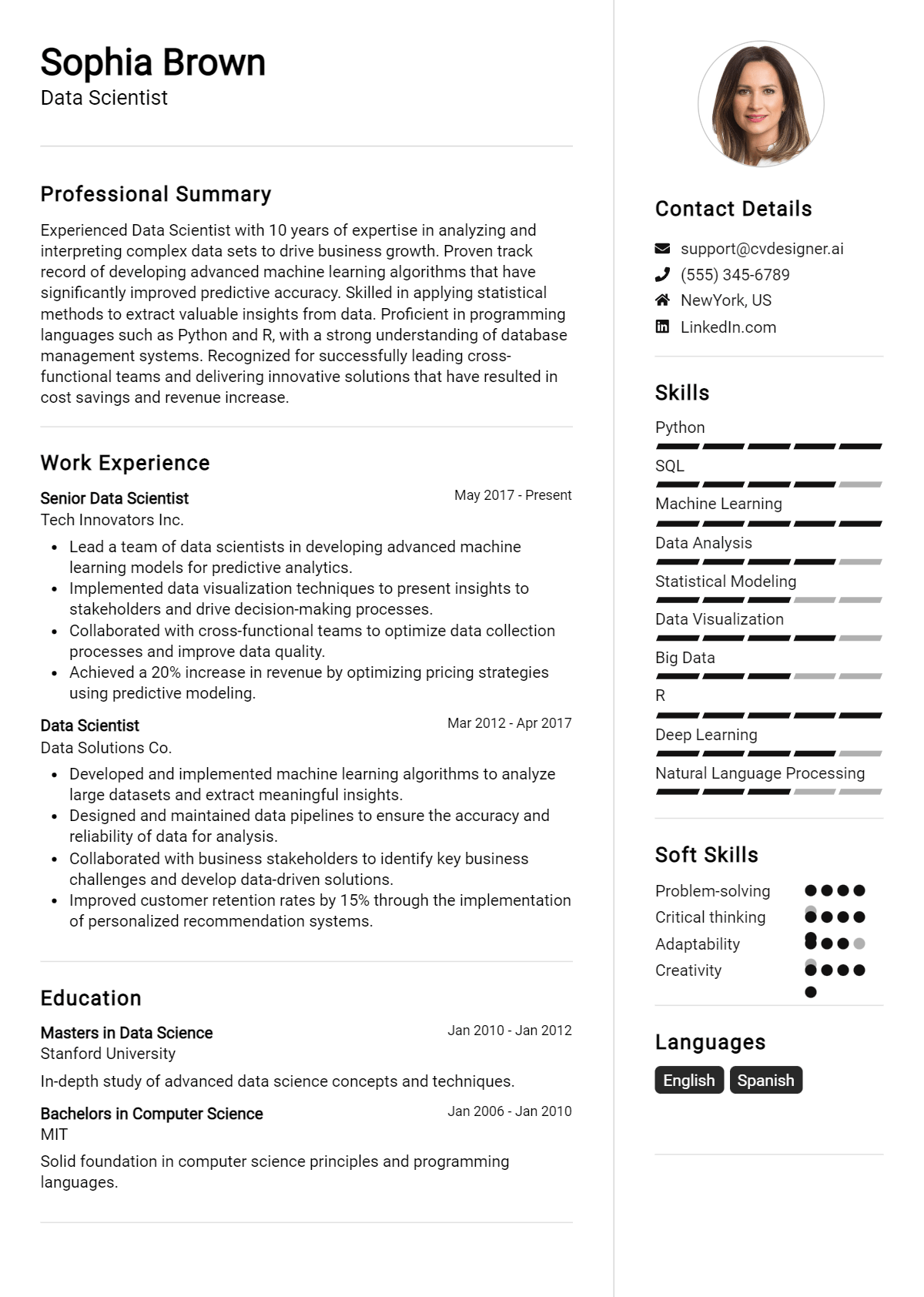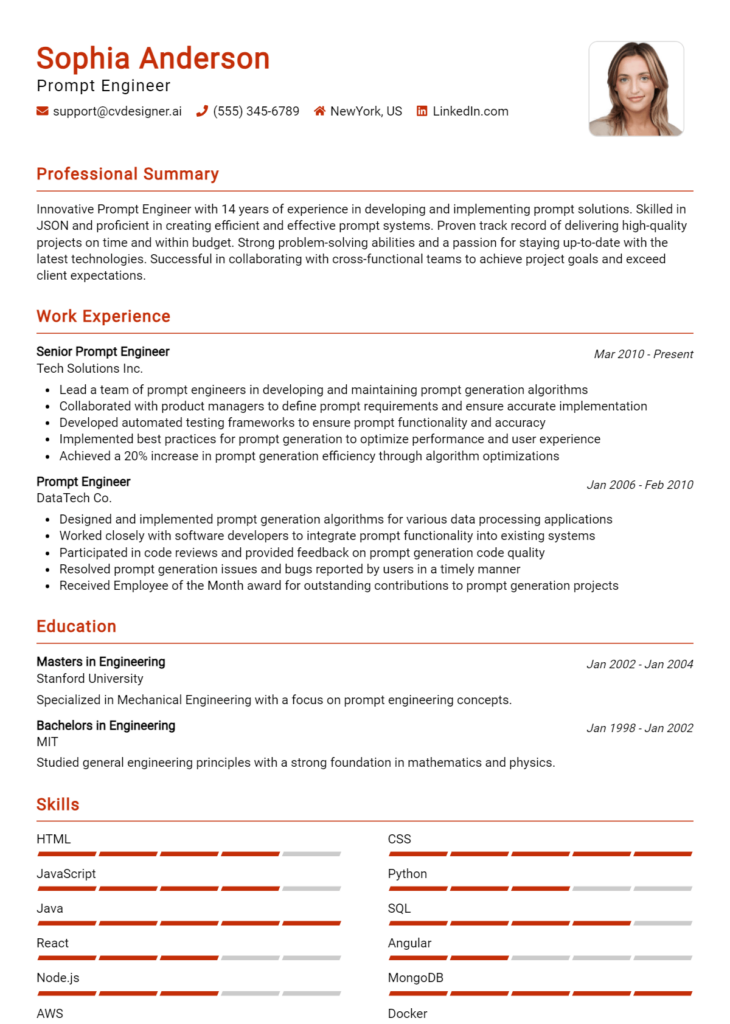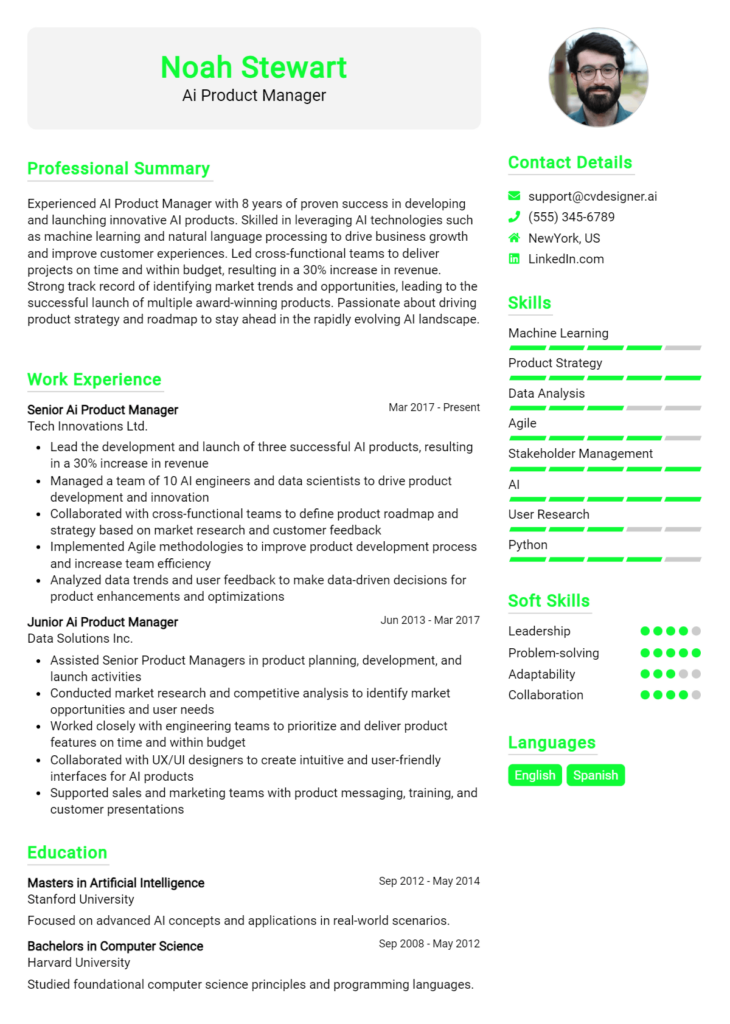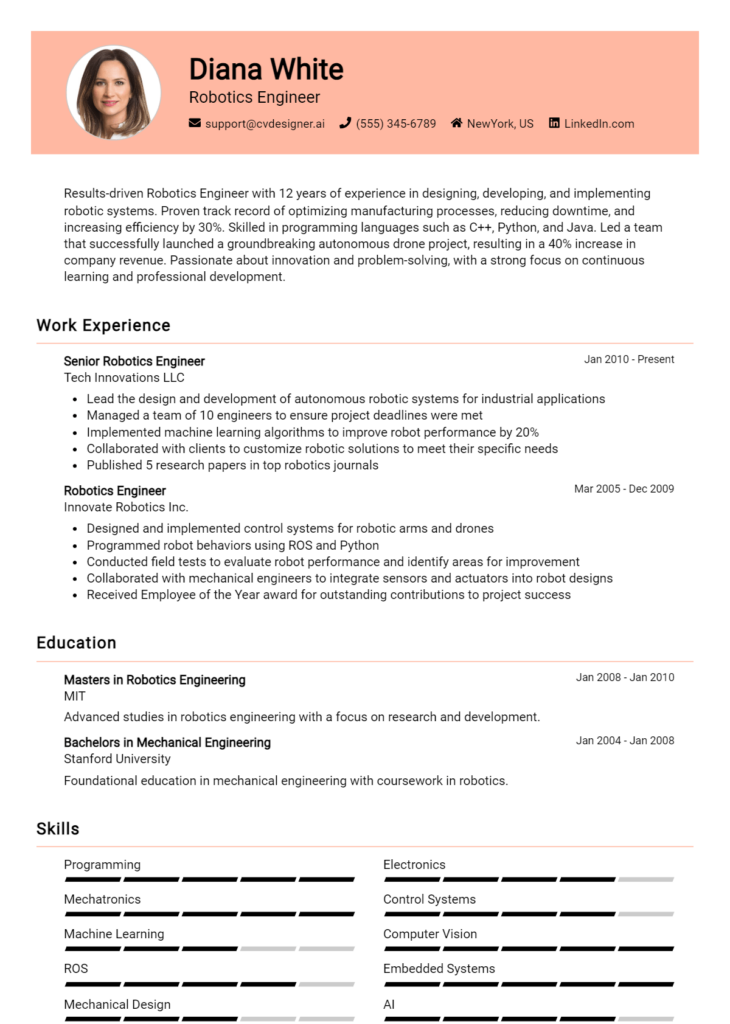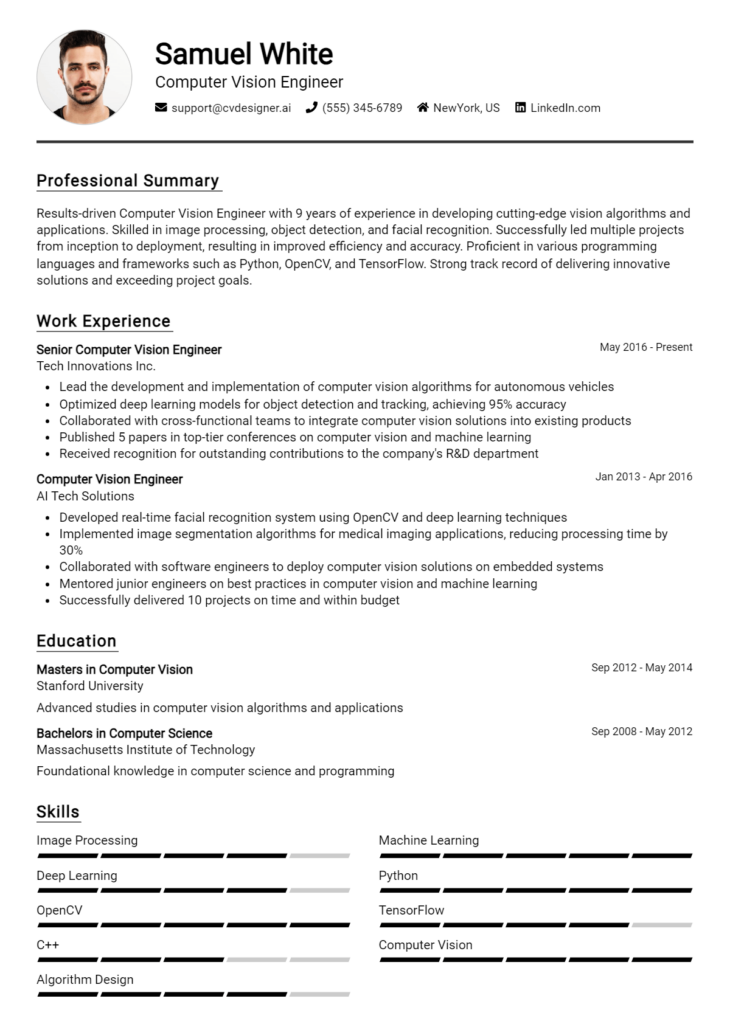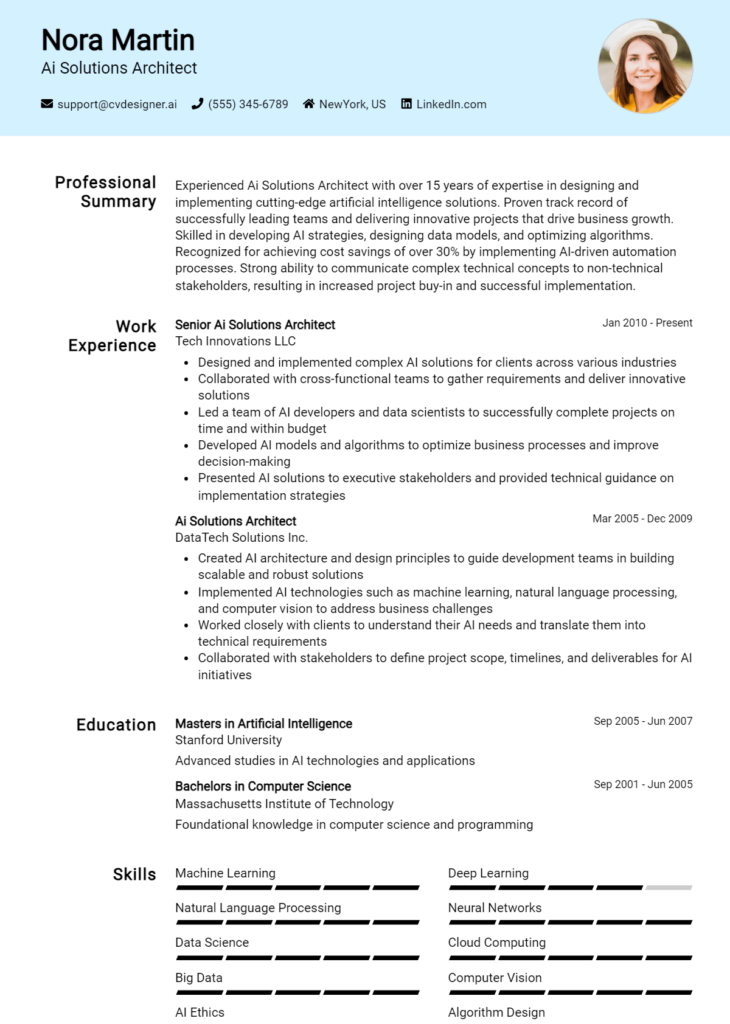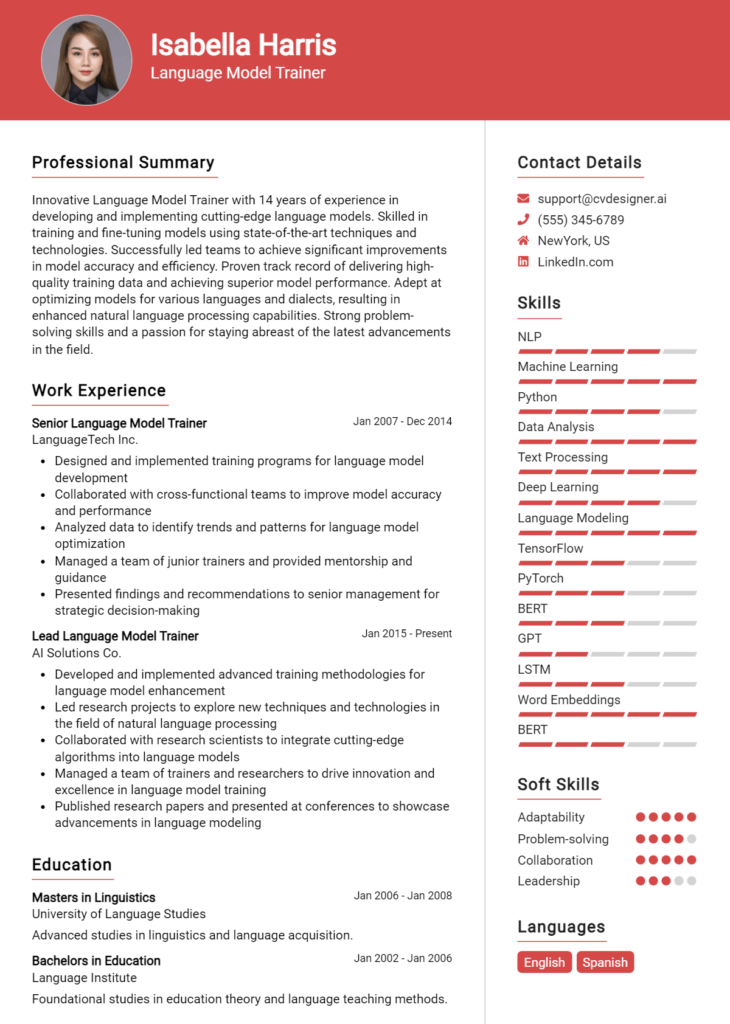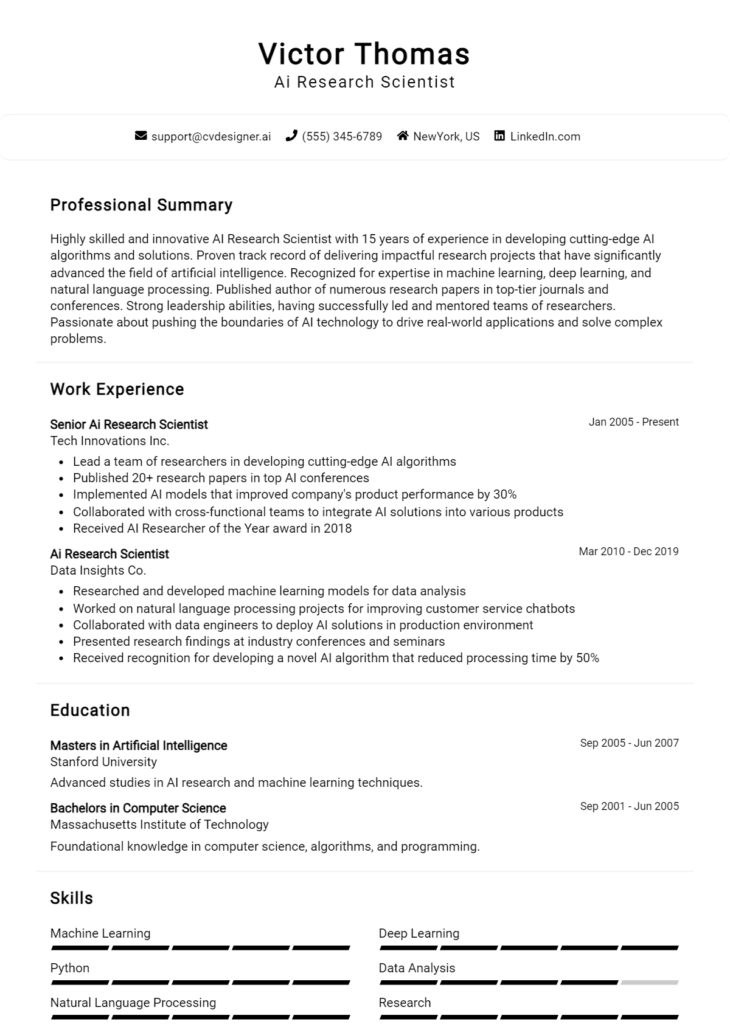Most Popular Data Scientist Resume Examples
Explore additional Data Scientist resume samples and guides and see what works for your level of experience or role.
In today's data-driven world, the role of a Data Scientist has become increasingly vital across various industries. As organizations strive to make informed decisions backed by data insights, the demand for skilled professionals who can analyze vast datasets and extract meaningful information is at an all-time high. A well-crafted resume is your first step in showcasing your qualifications and standing out in a competitive job market. It serves as your personal branding tool that communicates not only your technical skills but also your ability to solve complex problems and drive business growth.
In this comprehensive Data Scientist resume writing guide, we'll cover essential aspects that will enhance your job application. You'll learn about the key responsibilities and skills that hiring managers are looking for, and discover the best formats to present your information effectively. We will also highlight common mistakes to avoid that could hinder your chances of landing an interview. Furthermore, we’ll provide resume examples suitable for all experience levels, along with valuable tips on crafting an impactful resume and selecting the right resume templates to ensure your application stands out. Whether you're a seasoned professional or just starting your career in data science, this guide will equip you with the knowledge needed to create a compelling resume that opens doors to your dream job.
Key Responsibilities and Skills for a Data Scientist
As a Data Scientist, you will play a pivotal role in extracting insights from complex data sets to drive business decisions. Your key responsibilities will typically include:
- Data Collection and Cleaning: Gathering data from various sources and ensuring its accuracy and completeness.
- Data Analysis: Using statistical techniques to analyze data trends and patterns.
- Model Development: Building predictive models and algorithms to forecast outcomes based on historical data.
- Data Visualization: Creating visual representations of data findings to help stakeholders understand complex results.
- Collaboration: Working alongside cross-functional teams, including engineers, product managers, and business stakeholders, to implement data-driven solutions.
- Continuous Learning: Staying updated with the latest industry trends, technologies, and methodologies in data science.
Essential skills required for a Data Scientist include:
- Proficiency in programming languages like Python or R
- Strong understanding of statistics and probability
- Experience with data visualization tools (e.g., Tableau, Power BI)
- Familiarity with machine learning algorithms and frameworks
- Knowledge of big data technologies (e.g., Hadoop, Spark)
- Excellent problem-solving and critical-thinking abilities
- Strong communication skills for conveying complex information clearly
Highlighting these skills effectively in the resume skills section is crucial for standing out to potential employers. Tailoring your responsibilities and skills to align with the specific job description not only demonstrates your suitability for the role but also showcases your attention to detail. Additionally, consider how these skills can be presented in a strong CV, emphasizing relevant experiences and projects that illustrate your capabilities and contributions in previous roles.
Best Resume Format and Structure for a Data Scientist
When crafting a resume for a Data Scientist position, it's essential to use a format that emphasizes your technical skills, relevant experience, and educational background. Here’s a detailed guide on the best resume format and structure, including key sections and tips on content.
Contact Information
Begin your resume with your contact information at the top. This section should include:
- Full name
- Phone number
- Professional email address
- LinkedIn profile link (optional but recommended)
- GitHub or personal website link showcasing your projects (if applicable)
Professional Summary
A professional summary is a brief statement that summarizes your qualifications and career objectives. Aim for 2-4 sentences that highlight:
- Your years of experience in data science
- Key areas of expertise (e.g., machine learning, data analysis, statistics)
- Notable achievements or projects that illustrate your skills
- Your career goals and what you can bring to the prospective employer
Work Experience
This section should list your relevant work history in reverse chronological order (most recent first). For each position, include:
- Job title
- Company name and location
- Dates of employment (month and year)
- Bullet points detailing your responsibilities and accomplishments, focusing on:
- Specific projects you worked on (e.g., data analysis, model development)
- Technologies and tools used (e.g., Python, R, SQL, TensorFlow)
- Measurable outcomes (e.g., improved accuracy by X%, reduced processing time by Y hours)
Education
List your educational background, starting with the most recent degree. Include:
- Degree obtained (e.g., Master of Science in Data Science)
- University name and location
- Graduation date (month and year)
- Relevant coursework or projects that are applicable to data science
Skills
Highlight a combination of technical and soft skills relevant to the role. Organize this section into two subsections:
- Technical Skills: Include programming languages (e.g., Python, R, SQL), data visualization tools (e.g., Tableau, Power BI), machine learning frameworks (e.g., Scikit-learn, Keras), and database management (e.g., MongoDB, MySQL).
- Soft Skills: Showcase interpersonal skills like communication, collaboration, problem-solving, and critical thinking, which are essential for a data scientist.
Certifications
If you have completed any relevant certifications, list them in this section. Include:
- Name of the certification (e.g., Certified Data Scientist, AWS Certified Machine Learning)
- Issuing organization
- Date obtained
Additional Sections (Optional)
Depending on your experience, you might also consider adding:
- Projects: Highlight significant personal or academic projects that showcase your skills.
- Publications: If you have published papers or articles related to data science, list them here.
- Languages: If you are proficient in other languages, mention them as it can be a valuable asset.
Tips for Formatting
- Use a clean, professional layout with clear headings and plenty of white space for readability.
- Choose a font size between 10-12 points and a professional font type (e.g., Arial, Calibri, or Times New Roman).
- Keep your resume to one page unless you have extensive experience, in which case two pages may be appropriate.
- Use bullet points to make it easy for hiring managers to skim through your qualifications.
Complementing Your Cover Letter
The format of your resume should complement your cover letter. Use consistent fonts and colors across both documents for a cohesive look. Your cover letter should expand on the highlights from your resume, providing context to your achievements and expressing your enthusiasm for the role. Refer to specific projects or experiences mentioned in your resume to create a narrative that connects your skills and qualifications directly to the job you are applying for.
By following this structured format and including the suggested content, you can create a compelling resume that effectively showcases your qualifications as a Data Scientist.
Writing Tips and Best Practices for a Data Scientist Resume
When crafting a resume as a Data Scientist, it's essential to present your skills, experience, and accomplishments in a clear and impactful manner. Start by tailoring your resume to highlight relevant technical proficiencies, analytical capabilities, and problem-solving experiences that align with the job you're applying for. Consider using action verbs to describe your contributions and projects, making sure to quantify achievements where possible to demonstrate your impact. Leveraging industry-specific keywords can help your resume stand out, especially when passed through Applicant Tracking Systems (ATS). Additionally, maintaining a clean and professional layout is crucial for readability and first impressions, so be sure to utilize resume writing tips for guidance. Don't forget that these practices also translate to your cover letter, where you can further elaborate on your passion for data science and how your skills can contribute to the prospective employer.
- Use strong action verbs like "developed," "analyzed," "implemented," or "optimized" to start bullet points.
- Quantify your achievements by including metrics, such as "increased model accuracy by 15%" or "reduced processing time by 30%."
- Incorporate relevant technical skills and tools, such as Python, R, SQL, machine learning, or data visualization software.
- Tailor your resume for each application by including keywords from the job description that reflect the required skills and experiences.
- Highlight specific projects with a focus on outcomes and your role in achieving them.
- Keep your resume to one or two pages, focusing on the most relevant experiences and skills.
- Use bullet points for clarity and to enhance scannability, making it easier for hiring managers to digest your information quickly.
- Proofread your resume multiple times to eliminate any grammatical errors or typos, ensuring a polished final product.
Common Mistakes to Avoid in a Data Scientist Resume
When crafting a resume as a Data Scientist, it's crucial to present your skills and experiences effectively to stand out in a competitive job market. However, many candidates fall into common pitfalls that can undermine their chances of landing an interview. Avoiding these mistakes can significantly enhance your resume's impact and clarity. Here are some common errors to steer clear of:
- Overloading the resume with excessive information that dilutes key messages.
- Using generic descriptions that fail to highlight specific achievements and skills.
- Failing to tailor the resume to the specific job description or company.
- Neglecting to quantify accomplishments with data and metrics.
- Including irrelevant work experience or outdated skills that do not apply to the role.
- Ignoring formatting consistency, which can make the resume look unprofessional.
- Using technical jargon without context, making it hard for non-specialists to understand.
- Omitting key skills or tools that are relevant to the Data Science field.
- Not proofreading for grammatical or spelling errors, which can reflect poorly on attention to detail.
- Making the resume too long or too short, as both extremes can hinder readability.
To ensure your resume is as effective as possible, consider reviewing these common mistakes to avoid in a resume. Additionally, don't overlook the importance of a strong cover letter; familiarizing yourself with common cover letter mistakes can further enhance your application package.
Sample Data Scientist Resumes
As the field of data science continues to expand, the demand for skilled professionals is greater than ever. Crafting an effective resume is crucial for standing out in this competitive landscape. Below are three sample resumes tailored for different levels of experience in data science: one for an experienced professional, one for an entry-level candidate, and one for a career changer. Each resume highlights relevant skills, experience, and education to help you create a compelling application.
Experienced Data Scientist Resume Sample
James Anderson
[City, State]
[Phone Number]
[Email Address]
Professional Summary
Results-driven Data Scientist with over 6 years of experience in leveraging data analytics and machine learning techniques to solve complex business problems. Proficient in statistical analysis, data visualization, and predictive modeling, with a strong ability to communicate technical findings to non-technical stakeholders.
Technical Skills
- Programming Languages: Python, R, SQL
- Data Visualization: Tableau, Matplotlib, Seaborn
- Machine Learning: Scikit-learn, TensorFlow, Keras
- Database Management: MySQL, MongoDB
- Tools: Git, Jupyter, Apache Spark
Professional Experience
Senior Data Scientist
XYZ Corporation, City, State
January 2020 - Present
- Developed and implemented machine learning models, improving predictive accuracy by 30%.
- Analyzed large datasets to identify trends and insights, resulting in a 15% increase in revenue.
- Collaborated with cross-functional teams to drive data-driven decision-making processes.
Data Scientist
ABC Analytics, City, State
June 2017 - December 2019
- Created interactive dashboards using Tableau, enhancing data accessibility for stakeholders.
- Conducted A/B testing and statistical analysis to optimize marketing strategies.
- Mentored junior data analysts, fostering a collaborative learning environment.
Education
Master of Science in Data Science
University of Tech, City, State
Graduated: May 2017
Bachelor of Science in Statistics
College of Science, City, State
Graduated: May 2015
Entry-Level Data Scientist Resume Sample
Sophia Martinez
[City, State]
[Phone Number]
[Email Address]
Professional Summary
Motivated and detail-oriented recent graduate with a Bachelor’s degree in Data Science. Skilled in statistical analysis, data visualization, and programming in Python and R. Eager to apply analytical skills in a data-driven environment.
Technical Skills
- Programming Languages: Python, R, SQL
- Data Visualization: Tableau, Power BI
- Statistical Analysis: Hypothesis testing, Regression analysis
- Tools: Jupyter, Git, Excel
Education
Bachelor of Science in Data Science
University of Example, City, State
Graduated: May 2023
Projects
- Predictive Modeling Project: Developed a predictive model for housing prices using Python and Scikit-learn, achieving an accuracy of 85%.
- Data Visualization Dashboard: Created an interactive dashboard in Tableau for visualizing COVID-19 cases, which was used for an academic presentation.
Internship Experience
Data Science Intern
Data Masters, City, State
June 2022 - August 2022
- Assisted in data cleaning and preprocessing for various projects.
- Collaborated with senior data scientists to develop predictive models and perform data analysis.
Career Changer Data Scientist Resume Sample
Michael Thompson
[City, State]
[Phone Number]
[Email Address]
Professional Summary
Dynamic professional transitioning from a background in finance to data science. Leverages strong analytical skills and experience in statistical analysis to derive actionable insights from data. Passionate about using data to drive strategic business decisions.
Technical Skills
- Programming Languages: Python, R
- Data Visualization: Tableau
- Statistical Analysis: Regression, Time Series Analysis
- Financial Tools: Excel, SAS
- Databases: SQL
Relevant Experience
Financial Analyst
Finance Solutions, City, State
March 2018 - Present
- Analyzed financial data to identify trends, contributing to a 10% reduction in costs.
- Developed complex financial models to forecast business performance and guide decision-making.
Data Science Projects
- Financial Forecasting Model: Built a forecasting model using Python to predict quarterly revenue, which improved budgeting accuracy by 20%.
- Customer Segmentation Analysis: Conducted data analysis using SQL and R to segment customers based on purchasing behavior, leading to targeted marketing strategies.
Education
Certificate in Data Science
Online University, City, State
Completed: August 2023
Bachelor of Arts in Finance
University of Finance, City, State
Graduated: May 2017
For more inspiration, explore additional resume templates that can help you format your own resume effectively. Additionally, corresponding cover letter examples can aid in creating a complete job application package that stands out to potential employers.
Checklist for a Data Scientist Resume
- Proofread for Errors: Carefully review your resume for spelling, grammatical, and punctuation errors. Reading it aloud can help catch mistakes you might overlook.
- Check Formatting Consistency: Ensure that fonts, sizes, bullet points, and spacing are consistent throughout the resume. A polished look enhances readability and professionalism.
- Tailor Your Resume: Customize your resume for each job application by including keywords and skills mentioned in the job description. This demonstrates your alignment with the role and makes it through ATS (Applicant Tracking Systems).
- Highlight Relevant Experience: Focus on your most relevant work experience and projects. Use quantifiable achievements to showcase your impact in previous roles.
- Include Technical Skills: Clearly list your technical skills, such as programming languages, data analysis tools, and machine learning frameworks. Be specific and relevant to the job you are applying for.
- Showcase Projects and Contributions: Include a section for relevant projects, open-source contributions, or publications. This can illustrate your hands-on experience and expertise in the field.
- Use Action Verbs: Start bullet points with strong action verbs to convey your contributions effectively. Words like "developed," "analyzed," and "implemented" can make your achievements stand out.
- Keep it Concise: Aim for a clean, concise resume that ideally fits one page, especially if you have less than 10 years of experience. Focus on the most impactful information.
- Include Contact Information: Ensure your name, phone number, and professional email address are clearly visible at the top of the resume. Consider adding links to your LinkedIn profile or portfolio.
- Utilize an AI Resume Builder: To ensure all elements are well-organized and professionally formatted, consider using an AI resume builder. This can help streamline the final touches on your resume.
Remember, a similar checklist can also be followed when creating a CV or cover letter.
Key Takeaways for a Data Scientist Resume Guide
In conclusion, crafting a strong Data Scientist resume is essential for showcasing your skills, experiences, and accomplishments effectively. By utilizing the provided examples and tips, you can create a compelling resume that stands out to potential employers. To take the next step in your job search, consider downloading a template from resume templates or exploring our collection of cover letter templates. Additionally, using our best resume maker can streamline the process and ensure your resume is polished and professional. Remember, following similar guidelines will also assist you in crafting a standout CV and an impactful cover letter. Good luck in your job search!
